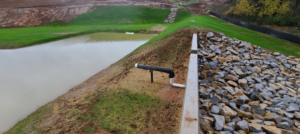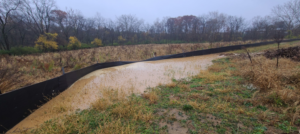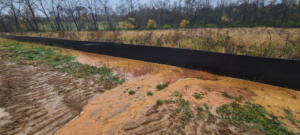Understanding Turbidity in Water: Compliance and Environmental Insights
Have you recently received an alert from the MDE eReporting system regarding the reporting of Turbidity and its mandatory submission for 1Q24? Reports are due by April 28, and it’s crucial to be prepared.
Primarily impacting MD General Permit 20-CP construction sites exceeding 1 acre in size and Individual Permits, Turbidity Monitoring applies specifically to construction sites in basins where the receiving water is listed as a Tier II or the receiving water is listed as Sediment Impaired. This quarterly monitoring involves daily sample collection from each discharge point for as long as the discharge is active.
In anticipation of this new requirement, Triad extends proactive assistance to ensure compliance. Our comprehensive services include Discharge Sample Collection, Erosion/Sediment Control Monitoring, and NPDES – SWPPP Services. By addressing these requirements promptly, we aim to facilitate a smooth and compliant process for your operations. Should you have any inquiries or wish to discuss how Triad can further assist you, please don’t hesitate to reach out. We are committed to supporting you in meeting these new reporting obligations.
Understanding Turbidity and Its Environmental Significance

Turbidity, the measure of relative clarity of a liquid, serves as a vital parameter in assessing water quality. It gauges the amount of light scattered by materials in water, such as clay, silt, organic matter, algae, and microscopic organisms. Turbidity makes water cloudy or opaque, impacting ecological productivity, recreational values, habitat quality, and causing lakes to fill in faster.
Moreover, Turbidity plays a crucial role in indicating potential pollution in water bodies. High concentrations of particulate matter can harm aquatic habitats, and the particles also provide attachment sites for other pollutants, such as metals and bacteria. Hence, monitoring Turbidity serves as an essential indicator of water quality.
Beyond its ecological implications, excessive Turbidity in drinking water is aesthetically unappealing and can pose health concerns. Turbid water provides food and shelter for pathogens, promoting regrowth and leading to waterborne disease outbreaks.
Measuring Turbidity has evolved with the introduction of state-of-the-art meters installed in rivers, providing instantaneous readings. These devices incorporate various water-quality sensors, including conductivity and temperature gauges, offering a comprehensive understanding of water conditions.
In conclusion, if you are a permit holder, applicant, operator, or an engineer this new regulation could affect you. Triad Engineering remains dedicated to supporting your operations through comprehensive services and expertise. If you have any questions or wish to explore how Triad can assist you further, please reach out to us. We are committed to ensuring your compliance and environmental stewardship.
We do more than turbidity measuring! Click HERE for a full list of our Environmental Services.





